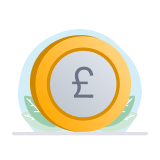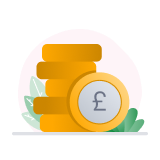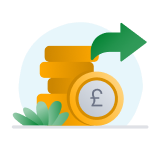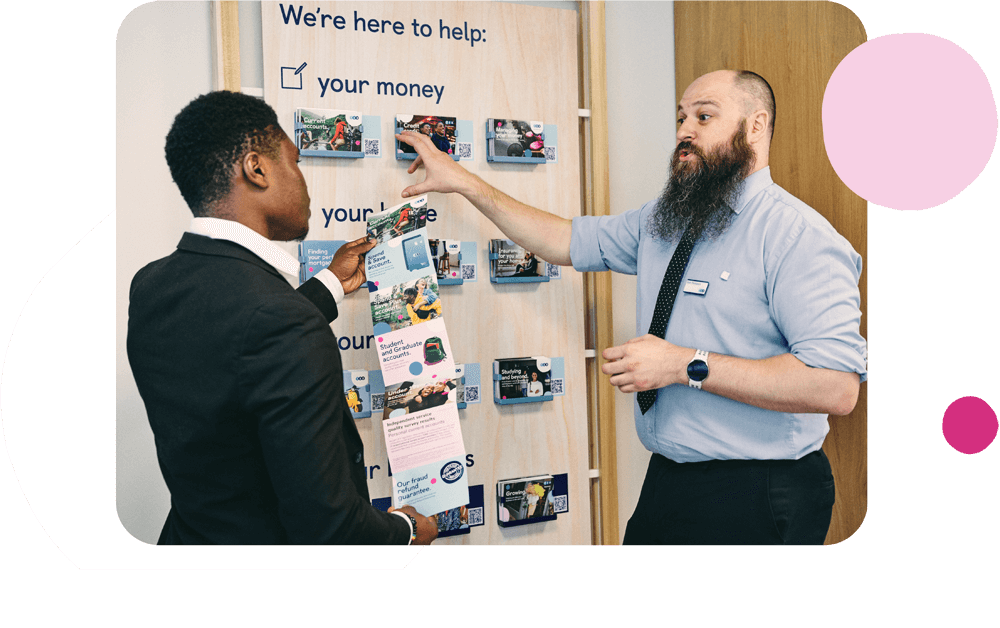You need to be 16+ and UK resident to open most of our savings accounts with the exception of Savings Pots and TSB ISAs.

How to get started with saving
If you’ve never saved before, it can feel a bit daunting knowing where to start. There are so many questions: are you saving for short-term or long-term goals? Do you have a target in mind? Is this an emergency fund? Do you need access to it or can you lock it away?
Let’s leave all that to one side for a moment and gently break down how to start saving with some handy tips from Carys Barnes, TSB’s Head of Current Accounts.

Starting to save
Before you do anything else, you should work out how much you can comfortably save. There’s a few ways to do that:
- Start small, with an amount you know you can afford – try using Moneyhelper’s budget planner if you’re not sure
- Save whatever’s left over at the end of each month, after all your bills and living costs are paid
- Save a set amount at the start of each month. It’s worth subtracting your outgoings from your income to understand how much cash is available first
- Some banks offer an automatic savings feature that lets you round up each purchase to the nearest pound and save the rest. So, if you buy something for £4.80, it’ll automatically round it up to £5 and pop 20p in your savings.
Carys’ top tip for starting to save is to save little and often. Doing this as early as possible can make a big difference. It might sound obvious but the key here is regularity. Know your budget, know how much you can put away and save a little regularly, it will soon start to add up and you will get used to your new spend budget vs save budget. Remember to set up a standing order so you don't have to set reminders to move the money yourself.
Research the savings rates
There are a range of savings rates that typically vary based on how long you’re prepared to lock your money away for. Some savings accounts allow you greater flexibility to dip into your savings, but often with a lower rate of interest.
You could always consider a mixture of the two. Have a savings account with money locked away for the longer term and another account that pays interest but allows you to dip into your savings.
Next you’ll want to think about your goals. To do that, let’s take a quick look at the difference between short-term and long-term savings.

Short-term savings
Short-term is often referred to as rainy day pots, emergency funds or even a savings buffer. The idea is to have enough money saved to cover unexpected costs, like a car breaking down or if you lose your job.
Because you don’t know if or when you’ll need to use the money, it’s a good idea to put money into an instant access account. Instant access means you can dip into the savings quickly, without being charged for it.
The benefit of doing this is that you’re actively moving money out of your main account where it could easily be spent. You’ll also be able to earn interest on the amount you’ve saved, helping your pot to keep on growing. Plus, if you set up a standing order, you’ll automatically be saving money without needing to think about it.

Long-term savings
Depending on your goals, there are a few different options available to you when it comes to saving for the long term. There are a few things to consider here, so we’ll give you a quick rundown of what savings accounts are available and what they’re good for.
| Type of account | Use |
| Fixed term savings accounts | If you’re saving for the long term, a fixed term savings account usually gives you a better interest rate as you won’t be able to easily access your money. In some cases, you won’t be able to withdraw your money until the end of your term, other accounts may charge if you take the money out early. |
| Regular savings accounts | Regular savings accounts often give a better interest rate than instant access accounts, as you’re putting money aside each month. However, they normally come with conditions such as needing to have a current account with the same provider and limits on how much you can put in each month. |
| Cash ISAs | ISAs are another type of savings account that lets you earn interest tax-free. There’s a certain amount that you can save each tax year – for example, in 2024-25 it’s up to £20,000 a year. Instant access Cash ISAs tend to have variable pay-rates which the provider can move up or down at any time with sufficient notice. A fixed-rate ISA guarantees a set interest rate for the whole term. |
| Stocks and shares ISAs | If you’re not planning on touching your money for more than 5 years, then investing could be a good option to look into. Investing offers the potential of higher returns but comes with the risk of losing money too. As your money is invested in assets (like shares, bonds or even gold), their price determines your returns – which could be more or less than you put in. |
| Children's Savings Account | Junior ISAs can be used to set aside tax-free savings which become available to the child at age 18. |
Remember, with long-term savings consistency is key.

How to choose the best savings account for you
When it comes to picking a savings account, there’s a lot to think about. The best savings account for you is the one that matches your goals, so think about what you want to do with your money. If you’re still not sure, here’s a few quick questions to answer:
- Are you saving for the short or long term?
- Will you be saving regularly or just saving a one-off lump sum?
- Can you access your account online or do you have to go to branch?
- Is the interest rate fixed or will it change?
- Will your interest be tax free?
Carys’ top tip for choosing an account is to maximise your tax-free allowance. As a nation we’re poor at using our ISA allowance, but it’s one of the best kept secrets for growing your wealth whilst shielding it from additional tax costs.
Basic rate taxpayers now pay tax on their savings if they earn more than £1,000 in interest, whereas higher rate payers pay when they hit £500. And additional rate tax-payers, paying the very highest rate, don’t have a tax-free allowance on their savings.

Using banking apps to help you save
Another way to really give your savings a boost is to use popular features in your banking app. For example, with TSB you can:
- Set up a Savings Pot - it’s an easy access savings account that’s linked to our Spend & Save accounts
- Give your Savings Pot a goal – you can rename these pots to things like ‘Holiday fund’ or ‘New shoes’ which may give you more incentive to save
- Turn on Save the Pennies - this feature tops up your chosen savings account every time you make a purchase with your card, so if you pay £2.50 for something, we’ll round it up to £3.00 and put 50p in your savings.

What about investing?
Carys’ top tip to investing is to play the long game and avoid get rich quick schemes. Wealth isn’t built overnight, and despite the adverts and claims you might see on social media, the reality is that most wealthy people have spent decades investing and saving to build their pots.
But thousands of people fall victim to investment and ‘get rich quick’ scams every year. When considering making investments, be on high alert for these 5 signs that it could be too good to be true:
- Promises of high returns at very low risk
- Unsolicited approaches by phone, text, and email
- High pressure sales tactics forcing you to make quick decisions you might not feel comfortable with
- Businesses with no website or which are not regulated by the FCA 5. Contact details that are only mobile phone numbers or a PO box address
Speak to a Money Confidence Expert
Whether you bank with us or not, we’re here to make banking better for everybody. Our goal is to help you get more from your money. And chatting to us is completely free.

